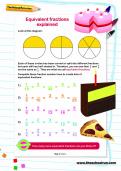What is PPA time?

Since 2005, all teachers have been entitled to PPA time: time away from their classroom for planning, preparation and assessment. This means that every week, your primary-school child will have some of their lessons taught by another member of staff.
What’s the point of PPA time?
PPA time was introduced to help ease teachers’ workload by giving them time during their normal working week to plan and prepare lessons and work on assessments for the children they teach. The aim of PPA time is to reduce the number of hours that teachers need to put into planning lessons and marking during evenings and at the weekend.


Boost Your Child's Learning Today!
- Start your child on a tailored learning programme
- Get weekly English & maths resources sent direct to your inbox
- Keep your child's learning on track
How much do teachers get?
All teachers are entitled to a minimum of 10 per cent of their regular teaching hours as PPA time. For most full-time teachers, this works out at about 2.5 hours per week. Their PPA time must fall within their normal teaching day; it can’t be bolted on at the beginning or end of the day, or given at times when they’re not timetabled to be teaching.
PPA has to be allocated to teachers in blocks of at least 30 minutes. It’s up to the school’s leadership team to decide how to allocate PPA time: in some schools, it might be taken in three short sessions, while in others, a teacher might have a whole afternoon out of class once a week.
Are all teachers entitled to PPA?
In short, yes. All employed teaching staff, including headteachers, deputy heads and those with other responsibilities like Special Educational Needs Coordinators (SENCOs) are entitled to PPA equating to 10 per cent of their teaching hours. Teachers who have leadership responsibilities also have additional time out of the classroom for Leadership and Management time, but this is on top of, not instead of, PPA.
Part-time teachers are also entitled to PPA equivalent to 10 per cent of their teaching time, so a teacher who works 15 hours a week, for example, will get 90 minutes’ PPA time. If a part-time teacher works so few hours that their PPA time ends up being very small – such as 20 minutes a week – it can be combined into a longer session once a fortnight.
Newly qualified teachers have the same PPA allowance as fully qualified teachers, but supply teachers don’t receive PPA time.
What can teachers do in PPA time?
As the name suggests, teachers must use their PPA time for preparation, planning or assessment. So, for example, they might use it to work out their lesson plans for the coming week, gather resources for an upcoming topic, mark recent classwork or write school reports. It’s up to the individual teacher how they use their PPA time, but the headteacher can insist that they stay on the school premises (although it’s recommended that they’re flexible about this).
Teachers shouldn’t be asked to give up their PPA time to cover for an absent member of staff or deal with issues such as behaviour problems that crop up in their class while they’re away from the classroom.
Who will teach your child during their teacher’s PPA time?
The best practice is for schools to employ qualified teachers to cover PPA time. This might involve a school having one (or more) part-time or full-time teacher who doesn’t have a class of their own and spends all their time teaching the different classes while the regular teacher is having their PPA time.
In reality, this can be difficult, especially in small schools or those on tight budgets. Often, they find other ways around the problem. For example, a class might do enrichment activities such as music or sport with an external agency (like the local schools music service) during their teacher’s PPA time; or they might be taught by a higher-level teaching assistant.
Sometimes, schools manage by ‘doubling up’ classes to free a teacher up for PPA – so, for instance, two separate classes might have an afternoon together with one teacher and their usual TAs, while the other teacher takes their PPA time. This is not recommended by the teaching unions, but can be a way of making PPA time work without the school having to employ extra staff.

Give your child a headstart
- FREE articles & expert information
- FREE resources & activities
- FREE homework help








